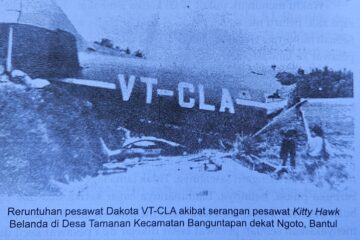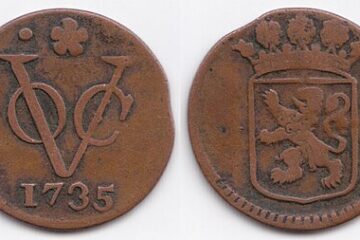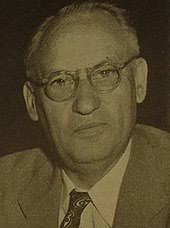Before the Second World War, the relationship between Australia, the Netherlands and the Netherlands East Indies (NEI) was marked by cordial distance rather than active diplomacy. There were no embassies , no treaties of alliance, and few direct communications between the two governments. Australia’s foreign affairs were largely managed through Britain, and the Dutch Empire’s attention remained fixed on Europe and internal colonial administration. The war changed all of that.
The Japanese threat to Southeast Asia and the fall of Singapore in 1942 revealed the weaknesses of Australia’s reliance on British strategic leadership. Prime Minister John Curtin’s landmark declaration that Australia now looked to the United States rather than Britain marked the start of a new foreign policy era. In this new context, Australia began to engage directly with its regional neighbours—including the exiled NEI authorities.
For the Dutch, the collapse of the NEI in early 1942 meant their administrative and military presence had to be re-established elsewhere. Lieutenant Governor-General Hubertus van Mook fled Java in early March with a small group of senior officials and, on arrival in Australia, immediately created a provisional NEI administration to preserve Dutch authority in exile. For security reasons, this was not made public at first. About two weeks later, the Australian government officially recognised the Dutch administration, and Prime Minister John Curtin offered a warm welcome, promising political and material support.
Initially based in Sydney, the administration soon relocated to Melbourne, where Dutch naval and merchant operations were concentrated and where coordination with Australian and American military authorities was easier. Cabinet discussions in Canberra formalised the arrangement: Australia treated the NEI administration as a sovereign Allied government-in-exile. This gave the Dutch legal authority over their forces, shipping, and civilians on Australian soil, even as their military assets were increasingly integrated into Allied operations under the South West Pacific Area command.
As a result, Dutch–Australian contact became daily and operational—transforming a previously distant relationship into a functional partnership.
However, this transformation was not smooth. As Jack Ford notes in Allies in a Bind, there was no existing diplomatic structure between the two governments. Everything had to be improvised. Requests for cooperation were often routed through British intermediaries. When Australia began asserting its own foreign policy, Dutch officials were not always sure whether they were speaking to a fully empowered government or a subordinate dominion. On the Australian side, there was uncertainty about who spoke for the Netherlands: Batavia or London.
R. W. A. van den Berg in Unchained Interests shows how the Allied war effort gradually forced more streamlined coordination. The creation of ABDACOM in 1942, despite its short lifespan, required formal Dutch–Australian collaboration. After the fall of the NEI, Dutch diplomats in Australia gained greater autonomy, and the Netherlands Purchasing Commission, Dutch naval headquarters, and Dutch refugee services were all established on Australian soil.
Despite these developments, both Dutch and Australian officials found themselves sidelined within the newly formed South West Pacific Area (SWPA) command. Led by U.S. General Douglas MacArthur, SWPA prioritised American strategic goals, often leaving other Allied partners with little influence in decision-making. Dutch military units and assets were incorporated into SWPA operations, but Dutch commanders had minimal input at the strategic level. Australian officials similarly resented the lack of consultation, especially as their territory and forces were central to the Pacific campaign. This unequal power dynamic created diplomatic tension and reinforced the need for more independent foreign policy structures in both nations.
General MacArthur’s own views shaped these dynamics. He regarded the Dutch as a marginal military ally, burdened by the rapid fall of the NEI and by what he saw as uncertain political goals regarding Indonesia’s future. MacArthur was sceptical of Dutch efforts to reassert colonial control and preferred working with powers that aligned more clearly with American postwar thinking. His attitude toward Australia, while recognising its strategic value, was similarly dismissive. He rarely consulted Australian political leaders on broader war planning and maintained tight control over operational decisions. This reinforced Australian and Dutch frustrations and highlighted their limited agency within the Allied command hierarchy.
According to Jack Ford, in Australia one of the clearest signs of closer ties with the Netherlands was the recognition of the NEI Commission in Australia as a de facto government-in-exile. Though technically subordinate to the Dutch legation, the Commission handled day-to-day operations, civil affairs, and military logistics. Lieutenant governor-general of the Dutch East Indies Hubertus van an Mook’s early moves to empower this body reflected a shift in Dutch strategic thinking—one that recognised Australia’s growing independence and regional role. The Commission was granted broader authority in 1942 and again in 1943, with Queen Wilhelmina’s personal endorsement of its activities from exile in London.
Australia’s experiences during the war fundamentally shifted its approach to diplomacy. No longer content to leave its international affairs to London, Canberra developed its own Department of External Affairs and began shaping an independent postwar vision. This included taking a more active role in regional issues, such as the future of Indonesia. Australia’s later involvement in the Indonesian National Revolution was a direct outgrowth of these wartime encounters.
For the Dutch, the war forced a recognition that the colonial model was under pressure from all sides—not only from Indonesian nationalists, but also from Allied partners who were increasingly sceptical of European imperialism in Asia. While Dutch officials hoped for a restoration of control in the Indies, they now had to operate in a world where Australia, the United States, and the broader Allied bloc were asking different questions about sovereignty and self-rule.
By the end of the war, Dutch–Australian relations had evolved from passive familiarity to active engagement. Though often tense and shaped by conflicting goals, the wartime relationship laid the foundation for a postwar relationship that are based on active collaboration and cooperation in many fields.
This article is part of a six-part series on Dutch–Australian wartime cooperation. For related perspectives, see:
- Between secrecy and survival: Australia’s frustration with Dutch neutrality on the eve of war.
- Divided in exile: tensions between Batavia and London in the Dutch war effort.
- Reform or restoration? Political tensions over the future of the Netherlands East Indies during wartime exile.
- Wartime reform and Indonesian voices: Dutch–Indonesian political tensions in exile.
- The Dutch purchasing mission and wartime supply issues in Australia.
- A Dutch military and civil inventory in Australia – March 1942 snapshot
References:
Jack Ford, Allies in a Bind: Australia and the Netherlands East Indies in the Second World War, CQU Press, 2001
R. W. A. van den Berg, Unchained Interests, Netherlands Staff College Monograph, 2021


